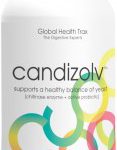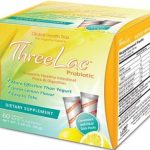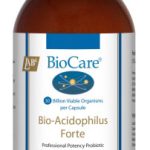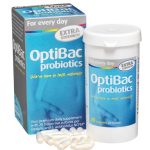Here’s a compilation of some of the best products to take on holiday. This is not so much based not on our own prejudices, but our own customers recommendation of what products you might find useful to have with you when you travel.
 Oxy-Powder (for a healthy colon) – “Oxy-Powder has made me feel so much better. I travel a lot and it helps tremendously with the dehydration that air travel seems to cauase, and makes my digestive system flow, reducing gut discomfort. Oxy-Powder does what it says on the tin, and is the perfect partner for my health.”
Oxy-Powder (for a healthy colon) – “Oxy-Powder has made me feel so much better. I travel a lot and it helps tremendously with the dehydration that air travel seems to cauase, and makes my digestive system flow, reducing gut discomfort. Oxy-Powder does what it says on the tin, and is the perfect partner for my health.”
“I bring Oxy-Powder on holiday with me in case I get constipated after travelling. I just need to take a dose or two and everything is back on track. I’ve had enemas and colonics but for me Oxy-Powder does the same job only better. ”
“I have used Oxy-Powder for my liver and bowel cleanses, or when I have eaten something not very healthy and I just want it out of my system as soon as possible:) I always travel with it to give my digestive system a boost which it needs when I eat differently or less healthily.”
“Oxy-Powder has made me feel so much better. I travel a lot and it helps tremendously with the dehydration that air travel seems to cauase, and makes my digestive system flow, reducing gut discomfort. Oxy-Powder does what it says on the tin, and is the perfect partner for my health.”
 Colosan Powder (also for a healthy colon) – “I find Colosan very effective. When I travel I take it along with me as its my best friend. I also introduced my sister in law and graundaughter to it, and they also find it very effective. I usually take 1 teaspoon in apple juice. I do not use the lemon juice as recommended on the label, as I have high stomach acid already and am on medication to reduce it, but the colosan works even without the lemon juice.”
Colosan Powder (also for a healthy colon) – “I find Colosan very effective. When I travel I take it along with me as its my best friend. I also introduced my sister in law and graundaughter to it, and they also find it very effective. I usually take 1 teaspoon in apple juice. I do not use the lemon juice as recommended on the label, as I have high stomach acid already and am on medication to reduce it, but the colosan works even without the lemon juice.”
“I take Colosan every time I feel I a cold is coming and I believe that it helps me to stay away from colds. Also when I feel constipated – usually when travelling or eating bad food I take Colosan. It is amazing. I highly recommend Colosan. ”
“I love Colosan, it is the best product I have tried for colon health. I have been taking it for at least 10 years. When I first took colosan I did the big cleanse but I now take just 2 capsules per day. I have tried other similar products, but always come back to my good old faithful colosan! I find the capsules more convenient than powder, easy to take on holiday etc. Along with biokult, I find colosan the best way to keep me regular and bloat free”.
 Oxygen Elements Max – “I have prescribed this product to countless patients and it has been a permanent inclusion in my supplemental regime for many years. It has numerous uses and benefits and is always included in my travelling must haves. I can personally vouch for its efficacy in relieving mucous congestion, for its ability to disinfect wounds,fungal skin and nail infections and for assisting the liver to deal with excessive alcohol intake after a celebratory evening out! My athletic patients have reported less problems with lactic acid build up in muscles. This is one product I shall continue using and prescribing indefinitely.”
Oxygen Elements Max – “I have prescribed this product to countless patients and it has been a permanent inclusion in my supplemental regime for many years. It has numerous uses and benefits and is always included in my travelling must haves. I can personally vouch for its efficacy in relieving mucous congestion, for its ability to disinfect wounds,fungal skin and nail infections and for assisting the liver to deal with excessive alcohol intake after a celebratory evening out! My athletic patients have reported less problems with lactic acid build up in muscles. This is one product I shall continue using and prescribing indefinitely.”
 OptiBac Probiotics Bifidobacterium & Fibre (Formerly For Maintaining Regularity) 30 sachets – I take a box of OptiBac on holiday with me – it helps maintain regularity when the stresses of travel/reduced levels of roughage in a ‘strange’diet tend to make me “bunged up”. I would highly recomment this. I regularly take oxygen products [OxyLift + Oxy-Powder], and feel I really benefit from them, but add OptiBac when I know I am likely to become constipated.”
OptiBac Probiotics Bifidobacterium & Fibre (Formerly For Maintaining Regularity) 30 sachets – I take a box of OptiBac on holiday with me – it helps maintain regularity when the stresses of travel/reduced levels of roughage in a ‘strange’diet tend to make me “bunged up”. I would highly recomment this. I regularly take oxygen products [OxyLift + Oxy-Powder], and feel I really benefit from them, but add OptiBac when I know I am likely to become constipated.”
 OptiBac Probiotics For travelling abroad “I have just completed a 2.5 week trip to Rajasthan, India, taking in Delhi and travelling across to Jaiselmer. The one thing that concerned me was getting ‘Delhi belly’ – I am 60 and didn’t want to have the trip spoilt by an upset tummy, even though I’d been told it was inevitable. I bought the OptiBac Traveller probiotics and took them before and during my trip. I didn’t have one upset and looking at fellow travellers who didn’t take anything, almost without exception, they were ill. Would highly recommend and would definitely take this version again if travelling to a similar country.”
OptiBac Probiotics For travelling abroad “I have just completed a 2.5 week trip to Rajasthan, India, taking in Delhi and travelling across to Jaiselmer. The one thing that concerned me was getting ‘Delhi belly’ – I am 60 and didn’t want to have the trip spoilt by an upset tummy, even though I’d been told it was inevitable. I bought the OptiBac Traveller probiotics and took them before and during my trip. I didn’t have one upset and looking at fellow travellers who didn’t take anything, almost without exception, they were ill. Would highly recommend and would definitely take this version again if travelling to a similar country.”
 Threelac or Fivelac – “This product seems to have a miraculous effect on my (super sensitive) digestive system; I’m not sure if I actually have low-level Candida but the symptoms are similar. I usually take one sachet per day before a meal but sometimes increase it to 2 or even 3 times per day if I’m likely to be eating food that’s normally a bit too rich for me to digest. I always plenty on holiday with me and have also found it can calm an upset stomach.”
Threelac or Fivelac – “This product seems to have a miraculous effect on my (super sensitive) digestive system; I’m not sure if I actually have low-level Candida but the symptoms are similar. I usually take one sachet per day before a meal but sometimes increase it to 2 or even 3 times per day if I’m likely to be eating food that’s normally a bit too rich for me to digest. I always plenty on holiday with me and have also found it can calm an upset stomach.”
“Threelac became a vital part of my life over two years ago, when I realised that candida control was essential in managing my Crohn’s disease. I introduced Fivelac for those times when I felt I needed something ‘extra’ – if for example I suffered an upset stomach while travelling, or felt that a Crohn’s attack was imminent. Suffice to say that since I started this regime, my Crohn’s has been pretty much completely under control for the first time in my adult life. Threelac and Fivelac are amazing products, and I simply wouldn’t be without either, ever again.”
Citricidal (grapefruit seed extract, natural anti-bacterial) – “This is great stuff to take with you for travel to ensure you don’t come down with dreaded tummy upset due to parasites in unclean water/food.”
Now that we’ve made our recommendations as to what products to take on holiday, enjoy your travels, and keep well!
 Mark G. Lester
Mark G. Lester
Director – The Finchley Clinic Ltd







